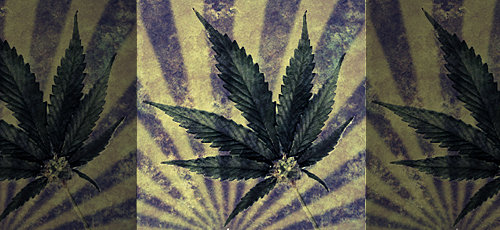
Wisconsin and Minnesota are very similar states with very different approaches to marijuana possession. The two states have roughly the same number of people and similar demographics, but Wisconsin arrests twice as many people for marijuana possession. Which makes for an interesting question: what might happen if Wisconsin cut its marijuana possession arrests in half?
Marquette Law Professor Michael O’Hear, on his excellent blog, thinks through the reasons why Wisconsin might arrest so many more people for pot possession than Minnesota does:
In 2010, Wisconsin law enforcement agencies reported 16,111 arrests for simple possession of marijuana, including both adult and juvenile offenders. The same year, Minnesota agencies reported only 7,453. With this one glaring exception, Wisconsin is not otherwise noticeably more aggressive about making drug arrests. Wisconsin also made more possession arrests for other drugs than did Minnesota, but the gap was much less pronounced (4,807 to 3,737), while Minnesota actually outstripped Wisconsin by a considerable margin when it came to arrests for drug trafficking (6,382 to 4,832). So, it is not as if our neighbors to the west have declared a general truce in the War on Drugs, while we have doggedly fought on. Rather, there seems something specific about marijuana possession that is differentiating the two states.
It seems unlikely that differences in marijuana use could account for such a large difference in the arrest rates. Indeed, based on the National Survey of Drug Use and Health, it appears that marijuana use in Minnesota is, if anything, slightly higher than in Wisconsin. So, the differences in arrest rates probably result to a significant degree from differences in police behavior. What drives those differences is not immediately apparent from any data that I have seen.
The difference has both economic and human costs. The act of arrest by itself carries an estimated marginal cost of $439 in law enforcement resources. So if Wisconsin cut its marijuana possession arrests in half, $3.5 million would be a highly conservative estimate of the savings to taxpayers. That estimate does not include the considerable costs of jailing the arrested ($144 per day in Milwaukee County), the court costs of prosecuting a fraction of those arrests ($167 apiece), or of incarcerating the relatively small percentage of arrests that lead to a jail or prison sentence ($31,000 per year in Wisconsin state prison).
There are also substantial human costs to arresting people for marijuana possession. A small survey of marijuana arrests in Washington found that the average cost of bail, fines, and court costs to be $1,675. People arrested for marijuana possession are often required to miss work to appear in court or to attend drug testing, and some lose their jobs. Some lose their license to drive. Moreover, even misdemeanor convictions make it difficult to find new employment.
Not only are the costs of a marijuana possession arrest steep, but they are disproportionately meted out against communities of color. To quote Prof. O’Hear again:
Whatever the cause of Wisconsin’s arrest rate, there is clearly a racial dimension to it, whether intentional or not. The adult marijuana possession arrest rate for blacks is nearly six times higher than the rate for whites (1,255 per 100,000 residents versus 217) (emphasis mine).
A factor of six is a huge difference, and it can’t be justified by different usage rates between white and black people, which study after study has found to be negligible. A better explanation for the disparity is probably where police are deployed, and how they interact with residents in communities in which they’re present. This is a problem by no means unique to Wisconsin; Minnesota is one of the worst offenders in the country when it comes to the black-white disparity in marijuana arrests.
Whether or not policymakers care about the fairness of a system that punishes and stigmatizes people for small-time pot possession, they should be interested in the value of deploying law enforcement resources for marijuana possession. This summer, Chicago Police Superintendent Garry McCarthy stated that marijuana decriminalization will halve the 45,000 hours police hours consumed by small-time marijuana arrests, “freeing up police resources for more serious crime.” According to former Minneapolis Chief of Police Anthony Bouza, “Making marijuana arrests a priority is a waste of police resources and does not reduce street violence.” Indeed, recent research found no indication that drug arrests reduce other crime.
Minnesota policymakers’ decision not to prioritize marijuana possession hasn’t caused an epidemic in usage; in fact, Minnesotans use marijuana at about the same rate as Wisconsin residents (Minnesota, 11.2 percent; Wisconsin, 10.6 percent). This suggests that we know what probably won’t happen if Wisconsin halved its marijuana possession arrests—usage is unlikely to skyrocket. We also know that the state is likely to save money and conserve police resources for more serious offenses. So why shouldn’t the state cut its marijuana possession arrests in half?
Learn more about drug law reform: Sign up for breaking news alerts, follow us on Twitter, and like us on Facebook.
